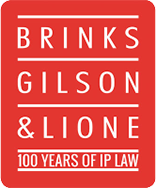The Patent Trial and Appeal Board (“Board”) recently issued a decision in Emerson Electric Co. v. Sipco, LLC (IPR2016-00984) (Jan. 24, 2020) that illustrates some important points for patent practitioners to consider when requesting a certificate of correction for a patent subject to a Petition for Inter Partes Review before the United States Patent and Trademark Office (USPTO).
The Board’s recent decision was the result of numerous proceedings before both the Board and the Federal Circuit, which began with Emerson Electric Co. filing a Petition for Inter Partes Review against Sipco, LLC (Patent Owner) on April 29, 2016. The Board issued a final written decision that found all challenged claims unpatentable under at least one ground on October 25, 2017. This decision was appealed by the Patent Owner to the Federal Circuit, and on appeal the Patent Owner requested that the Federal Circuit remand the case back to the Board based on a certificate of correction that had issued for the patent in question (8,754,780; “’780 patent”) after the date of the Board’s final written decision. (Id.) The Federal Circuit granted this request, and remanded the matter with an Order requesting the Board to address the issue of “what, if any, impact the certificate of correction had” on the Board’s final written decision.
On remand, the Board found that the earliest priority date to which the challenged claims of the ’780 patent were entitled was April 2, 2013, and refused to recognize the belatedly issued certificate of correction that would have changed the earliest priority to an earlier date in favor of the Patent Owner. This was because the certificate of correction did not issue until March 27, 2018, which was five months after the Board’s final written decision and three months after the Patent Owner appealed to the Federal Circuit. (Id. at 5.)
A patent owner is permitted to request a certificate of correction in accordance with 37 C.F.R. § 1.323, which allows patent owners to ask the Director to make corrections to “mistakes” in a patent. See 35 U.S.C. § 255. In this case, the Board noted a series of mistakes and oversights by the Patent Owner in seeking a proper certificate of correction. Although the Patent Owner filed a certificate of correction with the USPTO Petitions Branch about one month after the filing date of the Petition for Inter Partes Review, the Patent Owner failed to seek permission from the Board to do so, either before or after this filing. The USPTO dismissed the Patent Owner’s first request for correction, and although the Patent Owner’s second request was thereafter granted, the second request had no chain of priority to the first, and so the USPTO Petitions Branch treated it as a new request for correction. (Id. at 7-8.)
The Patent Owner then made a third request for a certificate of correction, and this time made its request to the Board, but this request was ultimately denied. (Id. at 8.) The Board later permitted the Patent Owner to submit a request for a certificate of correction to the USPTO Petitions Branch, and the Patent Owner did so. However, the USPTO Petitions Branch found there was no chain of priority to the first certificate of correction request, because the Patent Owner had again failed to “make a reference to the first (earliest) application and every intermediate application.” (Id. at 9.) Finally, and without any motion to the Board, the Patent Owner submitted a final request for a certificate of correction to the USPTO Petitions Branch, and this request was granted – leading to a certificate of correction issuing on March 27, 2018 that set forth a priority claim material to the final written decision of October 25, 2017.
The Board determined that the belatedly issued certificate of correction was well after its initial final written decision and should not be given retroactive effect so as to alter its initial decision. In considering both sides’ arguments, the Board turned to analyzing the language of 35 U.S.C. § 255, and whether or not it permits retroactive effect of a certificate of correction in an Inter Partes Review proceeding. The Board ultimately found that section 255 does not authorize such a retroactive effect. In other words, under the facts presented, the Patent Owner’s corrections of its mistakes in priority claims through a certificate of correction issued after the date of the Board’s final written decision did not apply back to the time when the Petition for Inter Partes Review was filed. Further, the Board made clear that “once a petition for inter partes review of a patent has been filed, the Board may exercise jurisdiction over a request for a certificate of correction, and may stay the request,” citing to 35 U.S.C. § 315(d), 37 C.F.R. §§ 42.3 and 42.122. (Id. 22.) The Board noted that its decision that the finally issued certificate of correction had no impact on its earlier final written decision was consistent with the Board’s exercise of exclusive USPTO jurisdiction over a patent once Inter Partes Review is instituted. (Id. at 22-23.)
Key Takeaway
Although non-precedential, the Board’s decision illustrates that it is best to file a request for a certificate of correction of a patent before Inter Partes Review is instituted. After institution, the Board has discretion to stay, and effectively deny, a patent owner’s ability to request a certificate of correction that can determine the outcome of the Inter Partes Review proceeding before the USPTO.




 />i
/>i

